Task and Instance Operations
The Operations Center provides management operations for tasks and instances. The tasks managed by the Operations Center include manually triggered tasks and periodically scheduled tasks, along with their corresponding instances, for centralized management.
- Task: A file created in the IDE and submitted to the Operations Center is called a task.
- Instance: A specific running entity generated by manually executing a file or by scheduled tasks is called an instance.
Task Operations
Task List
Click "Task Operations" in the left navigation to enter the task list page. The task list provides a summary display of tasks in all workspaces under the currently enabled service.
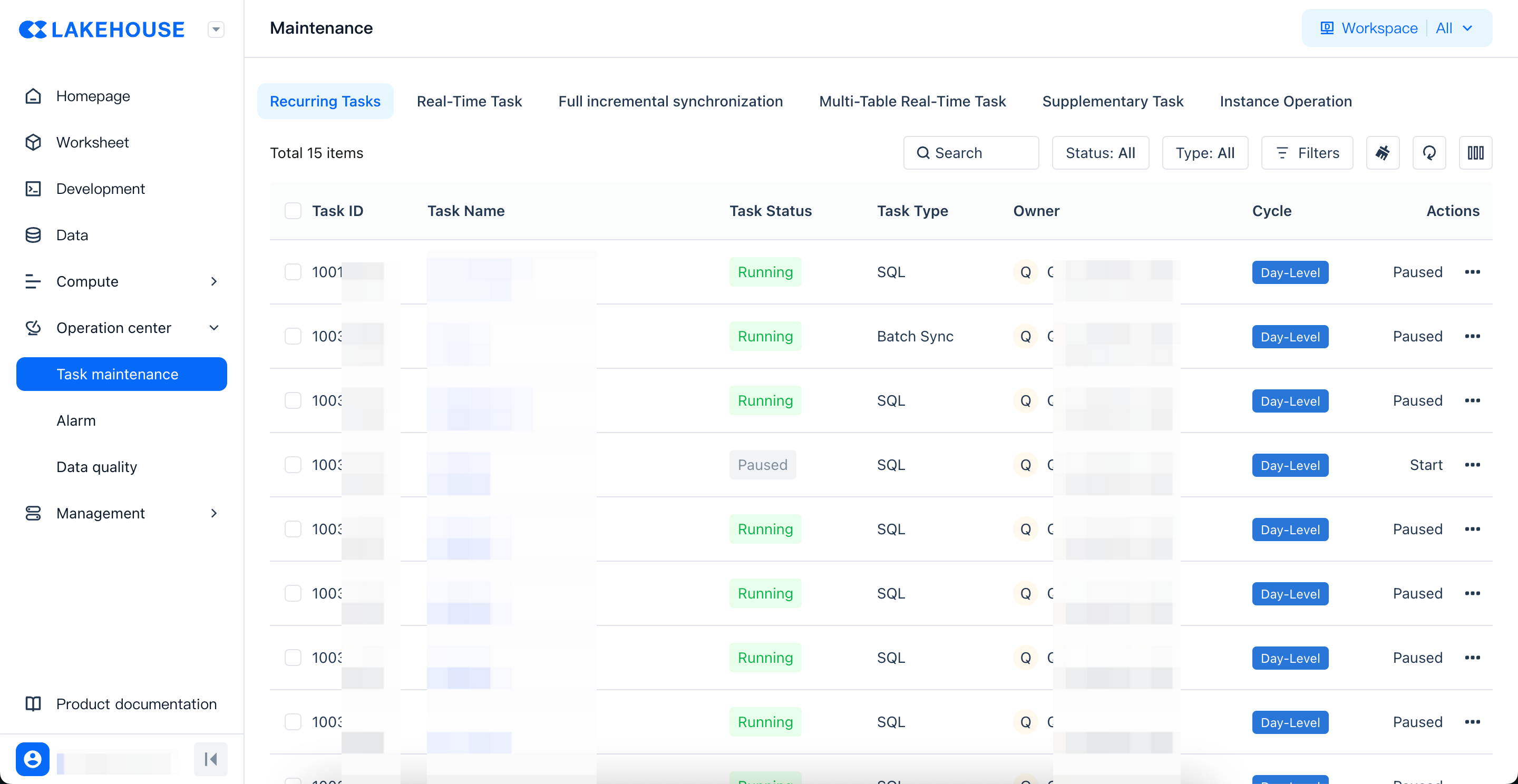
Task List Content
In the list, you can view key attributes such as task name, task ID, workspace, task status, and task type.
Task List Operations
In the task list, you can select single or multiple tasks for quick operations.
Single Task Operations
| Operation Name | Operation Description |
|---|---|
| Pause | Can only be operated on tasks that are not paused. After the operation, the task's scheduling attribute will be set to "Pause Scheduling," meaning no more task instances will be generated or run. |
| Start | Can only be operated on paused tasks. After the operation, the task's scheduling attribute will be restored to "Normal Scheduling," meaning task instances will be generated and run. |
| Delete | Removes the task from the Operations Center, reverting the task to the "Unsubmitted" state in the file. |
Batch Operations for Multiple Tasks
| Operation Name | Operation Description |
|---|---|
| Batch Start | Batch operation on selected tasks, restoring the task's scheduling attribute to "Normal Scheduling." |
| Batch Pause | Batch operation on selected tasks, setting the task's scheduling attribute to "Pause Scheduling." |
Task List Filtering
At the top of the task list, you can filter tasks based on their attributes as needed.
| Operation Name | Operation Description |
|---|---|
| More Filters | Click to expand more filter conditions. |
| Reset Filters | Click to reset and clear all current filter conditions. |
| Refresh | Refresh the list based on the given filter conditions. |
Task Details
From the task list, click the task name link to enter the task details page. On this page, you can view basic information, upstream and downstream dependency graphs, task instances, and code.
Basic Information
In this area, you can view the basic information of the task. You can collapse or expand it as needed.
Dependency Graph
In the dependency graph, you can view the directly upstream tasks that the current task depends on and the directly downstream tasks that depend on it.
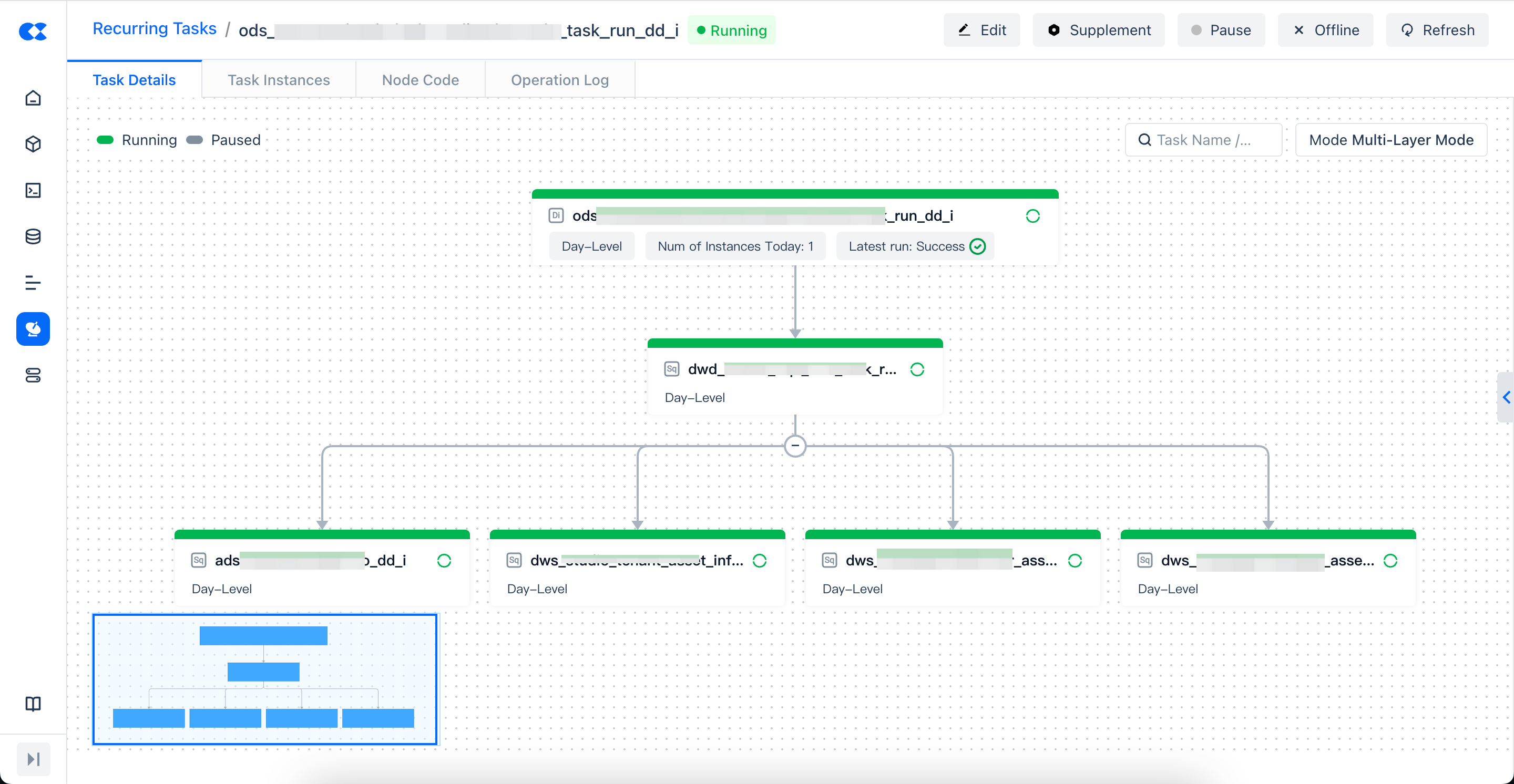
| Operation Name | Operation Description |
|---|---|
| Search | Quickly locate the task node on the graph by given task name or task ID keywords. The matching method used is "contains." |
| Refresh | Click to reload the entire dependency graph. |
Task Instances
In the task instance area, all task instances generated by the current task for all time ranges will be displayed.
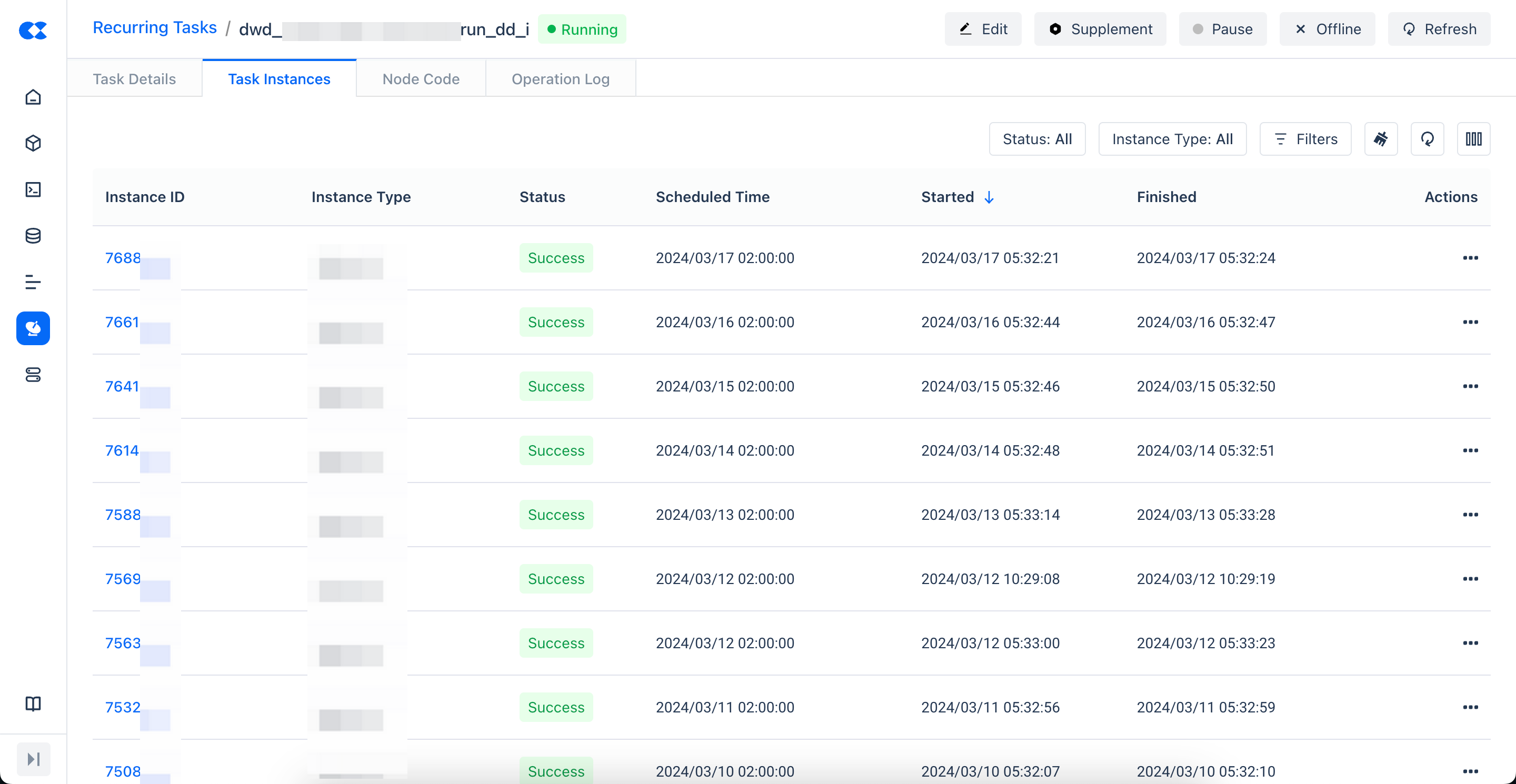
For a single task instance, basic control operations can be performed:
| Operation Name | Operation Description |
|---|---|
| Stop | Can be operated to stop instances that are not running. |
| Rerun | Can be operated to rerun instances that have reached a terminal state, meaning the instance will be run again. |
Code
The node code area displays the latest version of the code for the current task.
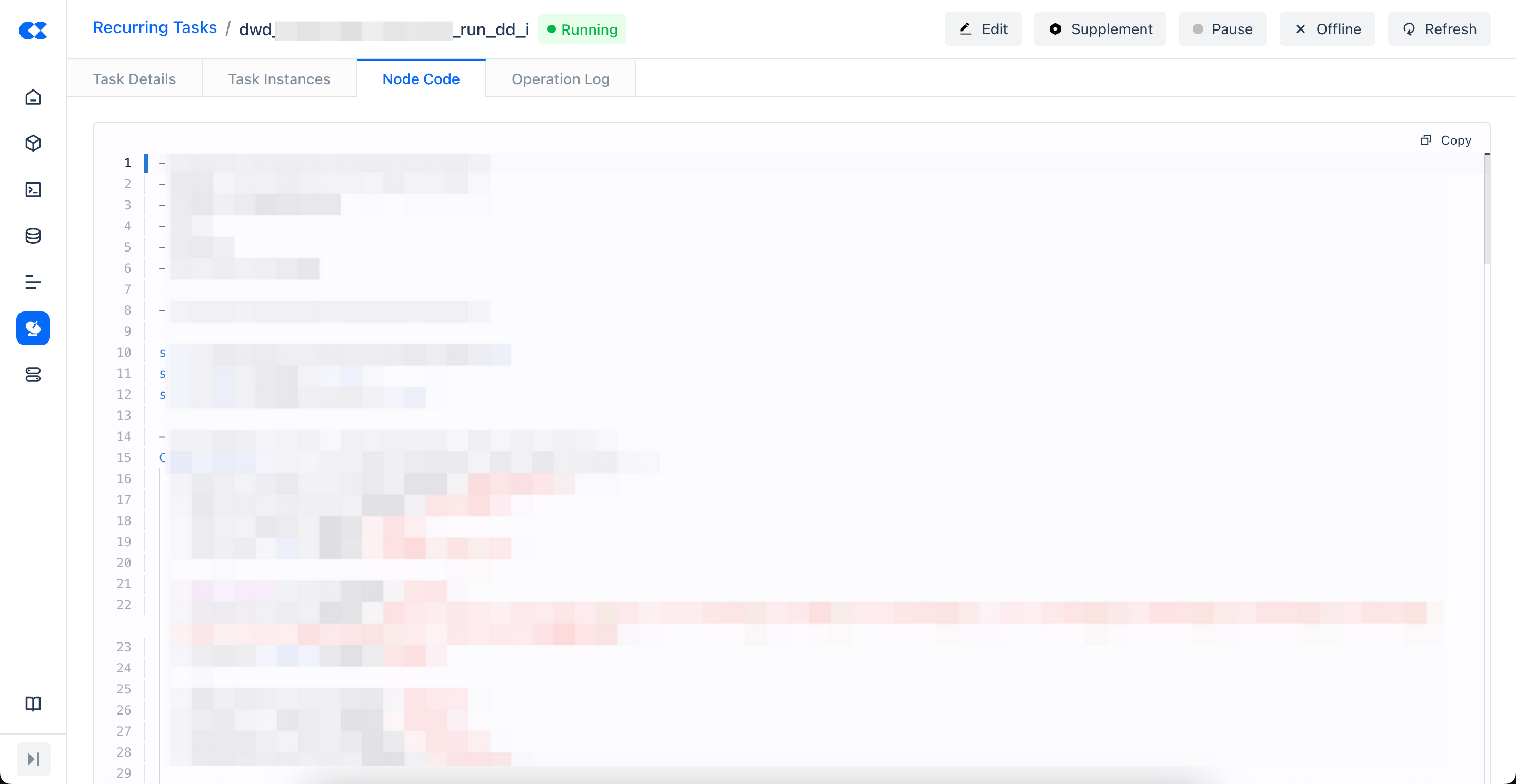
Task Operations
On the task details page, you can pause, start, or delete the task, with the same meaning and effect as the operations provided in the list.
| Operation Name | Operation Description |
|---|---|
| Pause | Can only be operated on tasks that are not in a paused state. After the operation, the scheduling attribute of the task will be set to "Pause Scheduling", meaning no more task instances will be generated or run. |
| Start | Can only be operated on tasks that are in a paused state. After the operation, the scheduling attribute of the task will be restored to "Normal Scheduling", meaning task instances will be generated and run. |
| Delete | Operates to take the task offline from the maintenance center, returning the task to the "Not Submitted" state in the file. |
Instance Maintenance
Instance List
Click "Instance Maintenance" in the left navigation to enter the instance list page. The instance list provides a summary display of task instances in all workspaces under the currently opened service instance.
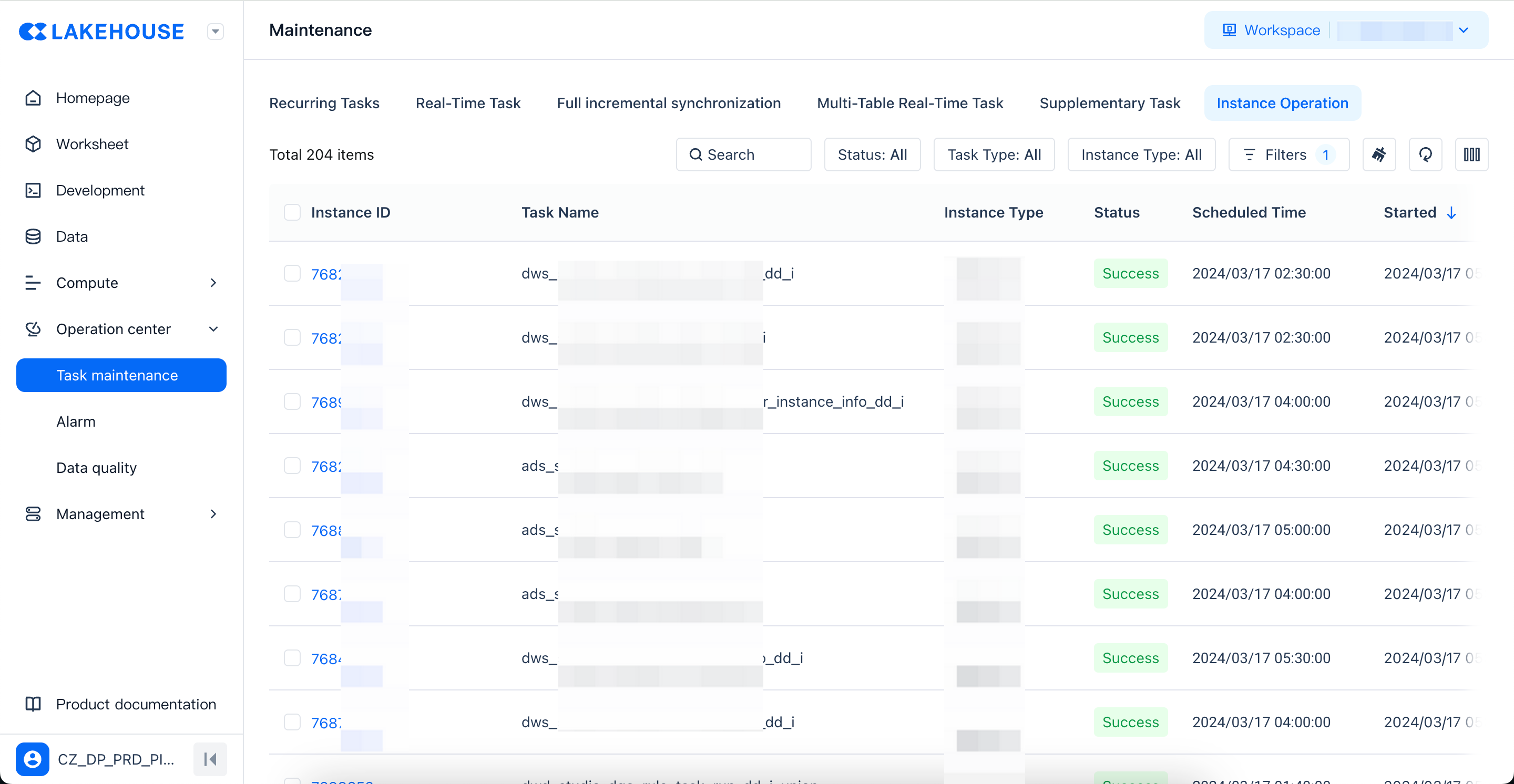
Instance List Content
In the list, you can view key attributes such as instance ID, corresponding task name, instance type, workspace, instance status, scheduled time, execution time, and completion time.
Instance List Filtering
At the top of the instance list, you can filter based on the task attributes as needed.
| Operation Name | Operation Description |
|---|---|
| More Filters | Click to expand more filter conditions |
| Reset Filters | Click to reset and clear all current filter conditions |
| Refresh | Refresh to retrieve the list based on the given conditions |
Instance List Operations
In the instance list, you can select one or more task instances for quick maintenance operations.

Single Task Instance Operations
| Operation Name | Operation Description |
|---|---|
| Pause | Can only be operated on task instances that are not in a paused state. After the operation, the scheduling attribute of the task instance will be set to "Pause Scheduling", meaning the task instance will no longer be scheduled to run. |
| Resume | Can only be operated on task instances that are in a paused state. After the operation, the scheduling attribute of the task instance will be restored to "Normal Scheduling", meaning the task instance will run according to the set schedule time. |
| Terminate | Can only be operated on running task instances. After the operation, the task instance will be terminated, and the task instance status will be set to failed. |
| Rerun | Can only be operated on completed task instances. After the operation, the task instance will be rerun. |
| Set Success | Can only be operated on failed task instances. After the operation, the task instance will be forcibly set to success. This can be used in emergency maintenance scenarios where it is determined that even if the current task instance fails, it will not affect the correctness of downstream task data, thus removing the blockage for downstream task instance runs. |
| Set Failure | Can only be operated on successful task instances. After the operation, the task instance will be forcibly set to failed. |
Batch Task Instance Operations
| Operation Name | Operation Description |
|---|---|
| Pause | Same as single operation. Note that it can only be operated on task instances that are not in a paused state. |
| Resume | Same as single operation. Note that it can only be operated on task instances that are in a paused state. |
| Terminate | Same as single operation. Note that it can only be operated on running task instances. |
| Rerun | Same as single operation. Note that it can only be operated on completed task instances. |
| Set Success | Same as single operation. Note that it can only be operated on failed task instances. |
| Set Failure | Same as single operation. Note that it can only be operated on successful task instances. |
Instance Details
From the instance list, click the instance ID link to enter the details page of the task instance. On this page, you can view basic information, upstream and downstream dependency graphs, task instances, and code.
Basic Information
In this area, you can view the basic information of the task instance.
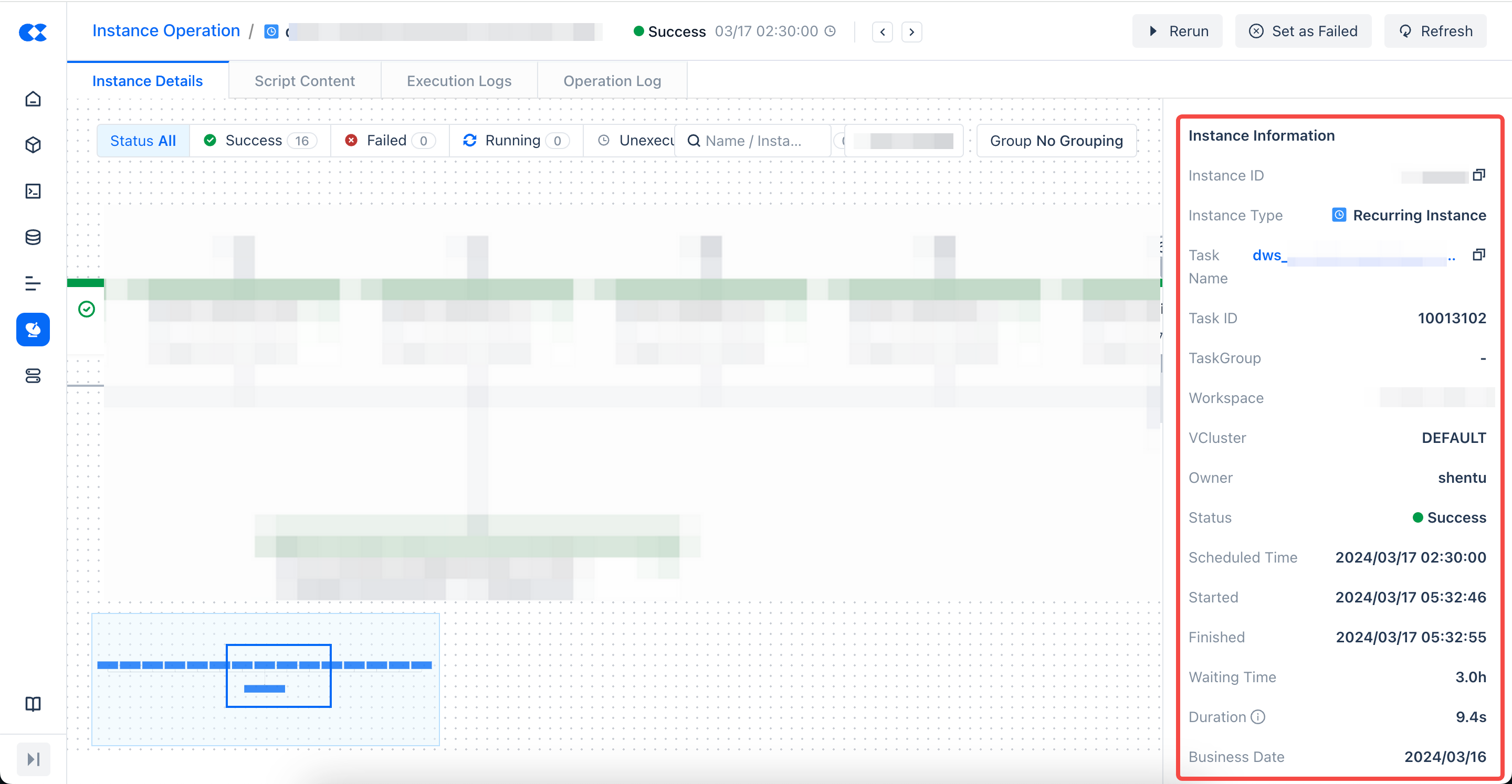
Dependency Graph
In the dependency graph, you can view the direct upstream task instances that the current task instance depends on, to quickly determine whether the current task instance can be scheduled normally.
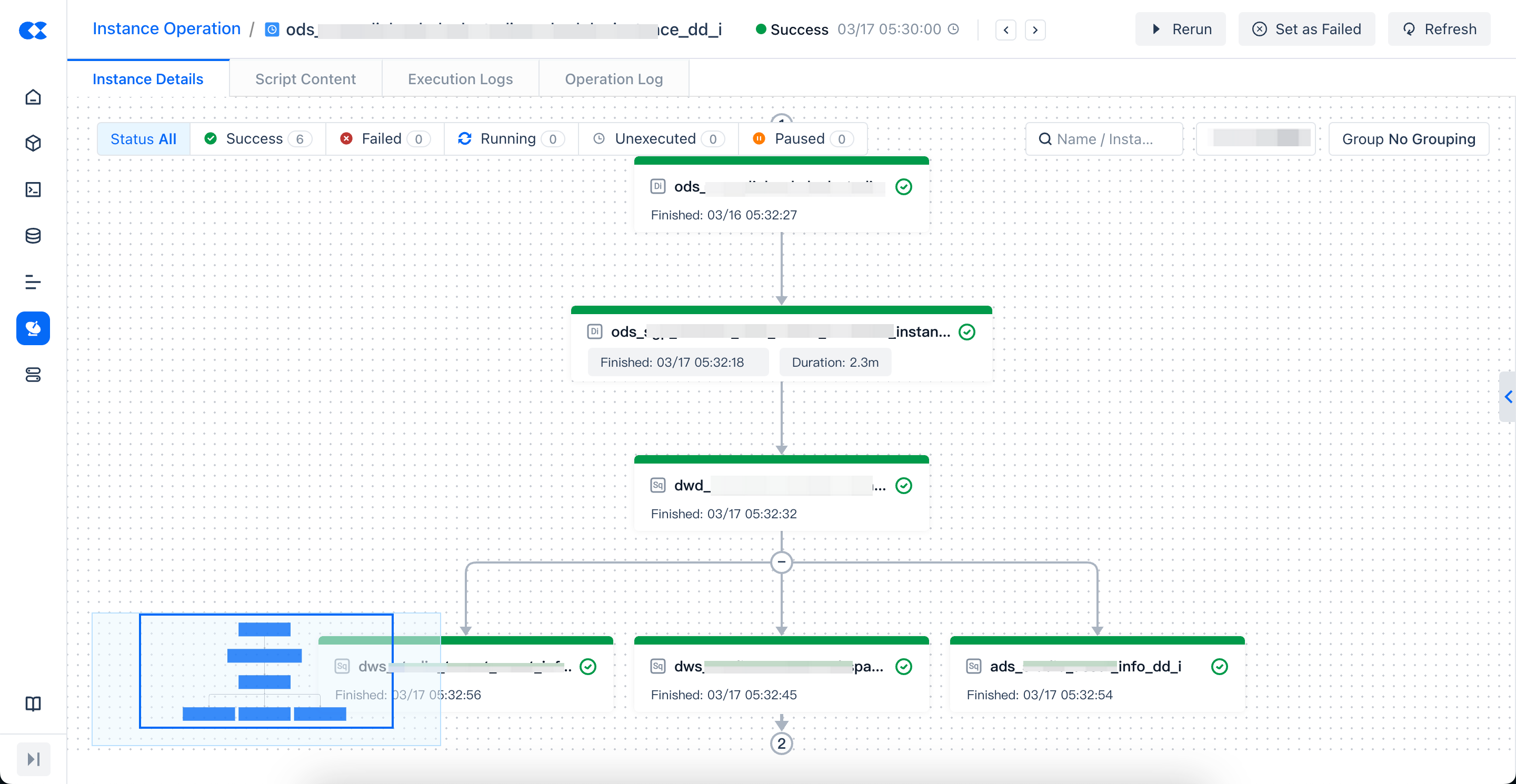
Dependency Graph Operations
| Operation Name | Operation Description |
|---|---|
| Search | By providing a keyword of the task name or instance ID, you can quickly locate the task instance node on the graph. The matching method used is "contains". |
| Refresh | Click to reload the entire dependency graph |
In the DAG graph, you can switch to choose to directly tile or group nodes, for example, to aggregate instance nodes with the same status into one group.

Code
The code area will display the version of the code used by the current task instance at runtime. Please note that this is the code used when the task instance was executed, which may not be the latest version of the task's code.
Execution Logs
The execution logs area will display all logs of the current instance execution, including logs generated after the task instance is rerun. Click the + icon on the left side of the list to expand and view detailed content.
Operation Logs
The operation logs area will display records of operations on the current instance.
Instance Operations
On the task instance details page, you can pause, resume, terminate, rerun, or mark the task instance as successful. The meaning and function are the same as the operations provided in the list.

